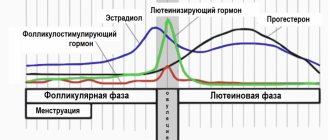Pituitary dwarfism or dwarfism is a dysontogenetic syndrome, which is characterized by a sharp lag in growth and physical development associated with an absolute or relative deficiency of somatotropic hormone. Dwarf height is considered to be less than 130 cm for men and less than 120 cm for women.
Somatotropic hormone or growth hormone is produced by the anterior lobe of the pituitary gland, therefore, in pathological or tumor processes in the pituitary gland, due to a violation of the synthesis of somatotropic hormone, the development of pituitary dwarfism is noted. In addition, if the hypothalamus, which regulates the function of the pituitary gland, is damaged, the production of growth hormone may also suffer, that is, hypothalamic-pituitary dwarfism develops. Experts also note the development of pituitary dwarfism due to the emergence of tissue resistance to growth hormone due to a lack of insulin-like growth factors and a lack of specific tissue receptors for somatotropic hormone.
According to medical statistics, pituitary dwarfism occurs in one in 30,000 people, and the frequency of occurrence does not differ between men and women.
General information
Pituitary dwarfism (another commonly used name is dwarfism , as well as microsomia , nanosomia ) is a condition in which there is a serious delay in human growth and physical development. This occurs due to a lack of somatotropic hormone (growth hormone, growth hormone) in the body.
This disease is considered to be very rare. According to various data, the disease affects 1-4 people per 10,000 population. Doctors note that male patients suffer from dwarfism approximately twice as often as women. It is generally accepted that dwarfism in men is a height lower than 130 cm. In women this figure is 120 cm.
Use of anabolic steroids
Patients with pituitary dwarfism are often prescribed anabolic steroids; the drugs can enhance growth and improve physical development. When using the drugs, the activity of osteoblasts increases and alkaline phosphatase increases.
Anabolic steroids increase bone height growth and do not have a strong effect on skeletal ossification and increased differentiation. They do not have a strong masculinization effect on women, but they affect the development of the uterus, and in men, anabolic steroids affect sexual development (if they have diseases of hypogonadism and pituitary dwarfism).
The very first anabolic steroid was methylandrostenediol.
Among the anabolic steroids that are still used today we can name: deca-durabolin, nerobolil, retabolil. They are administered intramuscularly, one mg per kilogram of the patient’s body weight. It was also found that when changing drugs with anabolic protein effects, the intensity of growth increases, as a result of which it is necessary to replace some drugs with others.
Every six months you need to monitor the condition of your bones. When using anabolic drugs, slight virilization appears in girls, and it disappears after their use is discontinued. Retabolil has less impact.
When using anabolic steroids, a cholestatic effect may appear, while the use of choleretic drugs stops its occurrence. An allergy may occur, which manifests itself in the form of a rash and itching. Treatment with anabolic steroids needs to be carried out over many years, and they must be used before growth begins to increase.
Causes
The word “nanism” comes from the Greek language and means “dwarf”. This clinical syndrome manifests itself in humans as a consequence of disorders of an endocrine and non-endocrine nature. In the body of patients suffering from dwarfism, there is a disturbance in the production of somatotropin (the so-called growth hormone) by the anterior lobe of the pituitary gland.
The cause of the manifestation of this disease in humans can be damage to the pituitary gland due to injuries, tumors, the influence of toxins and infection on the interstitial pituitary region. Sometimes the normal regulation of the functions of the pituitary gland by the hypothalamus .
The development of the disease is also influenced by genetic factors, loss or decrease in the somatotropic function of the pituitary gland, lack of biological activity of growth hormone, or impaired sensitivity to this hormone on the part of peripheral tissues.
Pituitary dwarfism is usually classified as a disease that is inherited genetically. In this case, it is important for a person to know whether there were cases of the disease in his close relatives and ancestors. Sometimes even old photos or asking relatives can help recognize the disease in loved ones.
But doctors also identify a number of factors that can aggravate the situation when a person develops dwarfism. Thus, pituitary dwarfism in children is often aggravated due to poor nutrition, the influence of negative environmental factors, and the presence of certain somatic diseases. Treatment of pituitary dwarfism involves eliminating such factors.
The cause of the development of dwarfism can be a birth injury to the head, as well as syphilis , tuberculosis , and sarcoidosis . Radiation therapy or chemotherapy is sometimes a predisposing factor to dwarfism. However, in approximately half of the cases the cause of the development of this pathology cannot be found out.
Treatment with growth hormone
The method of treating pituitary dwarfism is based on the use of somatotropic hormones. Human and primate Samotropin is used for this treatment. Self-tropic hormone was obtained thanks to genetic engineering (saizen, humatron). Such drugs are replaced with somatotropin, which is obtained from the pituitary glands of people who died from non-infectious and non-tumor diseases.
Treatment with somatotropin and its effectiveness depends on the age at which the patient began using it.
Young children who have delayed bone development and insufficient growth respond better to treatment with somatotropin. The drug must be used 3 times a week, by the method of administration.
A human somatotropic hormone (genetic engineering method), such as saizen or genotropin, is used as follows: the dose in the pre-pubertal period should be 0.5 IU/kg per week, and in the post-pubertal period the dose is 1 IU/kg per 7 days. The dose of the drug should be divided into seven injections (1st every day).
The company KabL, the manufacturer of genotropin, recommends using the drug at a dose of 0.5-0.7 IU/kg for 7 days, that is, 6 subcutaneous injections should be made. For injections, you need to alternate injection sites to avoid lipoatrophy.
It is known that the peak secretion of growth hormone occurs at night, so the secretion of the hormone should be simulated and injections should be given before bedtime.
Treatment with somatotroprin can last from a month to several years, until all possible methods of treating the disease are applied.
More recently, when growth hormone was used from human cadaveric pituitary glands, treatment lasted up to two years, and antibodies to growth hormone were formed.
The disease can be treated with somatotropin at different ages, only if the growth zone is not closed.
Signs
So, the main sign of the disease is considered to be low human stature - below 130 cm in men and below 120 cm in women. So, if a child normally grows by 7-8 cm per year, then with pituitary dwarfism the child’s growth increases by only 3-4 cm per year. It should be noted that doctors consider short stature to be constitutional, that is, of a family nature, as well as stunting in healthy children as a variant of the norm.
Dwarfism is a condition in which there is a very sharp lag in the growth and physical development of the body in comparison with the average norms for a certain age. Signs of dwarfism suggest not only a pronounced lag, but also a decrease in the annual dynamics of increase in height and weight in such a patient. As a rule, such children have completely normal indicators of both weight and height at birth. But later they show a significant lag behind their peers in these indicators. Sometimes the disease manifests itself from the very first months of life. But still, most often, parents notice symptoms of dwarfism in children at 2-4 years of age.
Patients who suffer from dwarfism have a proportional body shape and build. But at the same time, such proportions are more consistent with a child’s physique. Such people have dry and pale skin. The reasons for this phenomenon are insufficient functioning of the parathyroid glands. If a person does not receive regular and correct treatment, then the skin ages very early and wrinkles appear on it.
The fatty tissue under the skin is also poorly developed, and some patients have excess fat deposits on the abdomen, hips, and chest. At the same time, the muscles are very poorly developed. If in patients who develop gigantism , the muscles are initially strong and later weaken, then in patients with dwarfism, muscle weakness is noted immediately. Most often, such people do not experience secondary hair growth. Another important symptom that pituitary dwarfism manifests is delayed skeletal ossification. This phenomenon determines the late replacement of milk teeth with permanent ones.
Due to the loss of gonadotropic function of the pituitary gland, people with dwarfism experience insufficiency of sexual development. If we compare with age norms, then in men the penis and gonads are reduced, the scrotum is underdeveloped, and there are no secondary sexual characteristics. At the same time, women with pituitary dwarfism experience pronounced manifestations of hypogonadism. They may not have menstruation, the mammary glands remain underdeveloped, and secondary sexual characteristics do not appear.
Mental development in such patients meets normal criteria, but sometimes some juvenile features may appear. During a neurological examination, it is possible to detect some signs indicating organic damage to the nervous system. The internal organs of such patients are reduced (this phenomenon is called splanchnomicria ), they often suffer from manifestations of hypotension , bradycardia , and muffled heart sounds are noted. Sometimes phenomena of secondary hypocortisolism .
If nanism has developed in a patient as a result of organic brain damage, then general cerebral symptoms are present and intelligence decreases. Diabetes insipidus often develops with this condition .
Features of the structure of organs and their performance
The organs of patients (digestive organs, heart, lungs) that have pituitary dwarfism are very small in size. Their sizes correspond to the patient’s height, not his age.
A common symptom of pituitary dwarfism is arterial hypotension, with greatly reduced pulse, systolic, and diastolic pressure. The heart impulse at the top is very weak. A systolic murmur may be observed over the heart. Noise occurs due to a violation of myocardial trophism: During an electrocardiographic study, a reduced height of the teeth and low voltage can be observed.
During a phonocardiographic examination, reduced amplitude tones can be observed, functional noise and additional tones also appear. Oxygemometry reveals a slowdown in blood flow, hypoxia, and severe lack of oxygen. Intracellular potassium is low in the myocardium.
Diagnostics
Parents may have suspicions about dwarfism in a child already in the first months or years of the child’s life. When determining developmental features, the pediatrician evaluates not only the child’s height and weight, but also their dynamics.
If pituitary dwarfism is suspected, an x-ray examination is prescribed. X-rays of the hands and wrists show signs of delayed skeletal differentiation and ossification.
Computed tomography allows one to identify underdeveloped zones of skeletal ossification. During normal development of the body, bones are formed from cartilage, their ossification occurs gradually. Such processes begin from ossification points. They are completely completed when a person turns 20-25 years old. If the production of somatotropin is impaired, then during the study such points can be determined throughout a person’s life.
The patient is prescribed laboratory tests. In particular, an insulin test , in which there is no increased secretion of growth hormone (this is typical for the normal state of human health). Sometimes its secretion increases only for a short period and only slightly. Other tests are also used to detect the level of growth hormone in the blood. For this purpose, biologically active substances and some medications are used.
Treatment program for pituitary dwarfism
- General strengthening therapy;
- Treatment with growth hormone;
- Treatment with anabolic steroids;
- Correction during the pubertal period of sexual development and the use of replacement therapy in the post-pubertal period;
- The use of replacement therapy using thyroid drugs (for hypothyroidism).
The simplest treatment methods are:
- restorative therapy;
- treatment using growth hormone.
Prevention
There are no effective preventive measures to prevent dwarfism. However, the influence of harmful factors (poisons, toxins, etc.) should be avoided during pregnancy and subsequent breastfeeding . The development of the disease can be affected by injuries received during childbirth . The child should be provided with the most nutritious nutrition possible; the diet should contain foods high in vitamins and minerals. It is important to promptly treat all somatic diseases of the body.
List of sources
- Dedov I.I. Pediatric endocrinology / Dedov I.I., Peterkova V.A. - M., 2006;
- Clinical endocrinology: manual / ed. N.T. Starkova. — [3rd ed., rev. and additional] - St. Petersburg. : Peter, 2002;
- Nikitina I.L. Pediatric endocrinology: Textbook / Nikitina I.L. - Rostov-on-Don: Phoenix, 2006;
- Stroev Yu.I. Endocrinology of adolescents / Stroev Yu.I. Churilov L.P. - St. Petersburg. : ELBI-SPb, 2004;
- Shabalov M. Diagnosis and treatment of endocrine diseases in children and adolescents / Shabalov - M.: Medpress, 2003.






